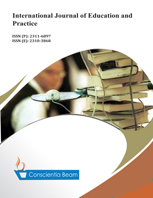User Perceptions of Technology Integration in Schools: Evidence from Turkey’s Fatih Project
DOI:
https://doi.org/10.18488/journal.61.2019.74.430.437Abstract
This study aims to provide insights into and evidence on technology integration in Turkish schools, particularly in high schools, through analyzing the effectiveness of the FATIH Project. The primary purpose attempts to determine whether teachers would accept this new technology and the barriers preventing its use. The frequently used technology acceptance model is used as a theoretical framework to highlight the integration process and behavioral aspects of acceptance. The results of the unstructured interviews are presented using tag cloud methodology. The findings reveal that perceived usefulness and perceived ease of use are two key factors affecting the use of technology in the classrooms. The proposed model can be applied to both secondary and higher education institutions; however, the methodology could be improved by including more participants in the focus groups.





